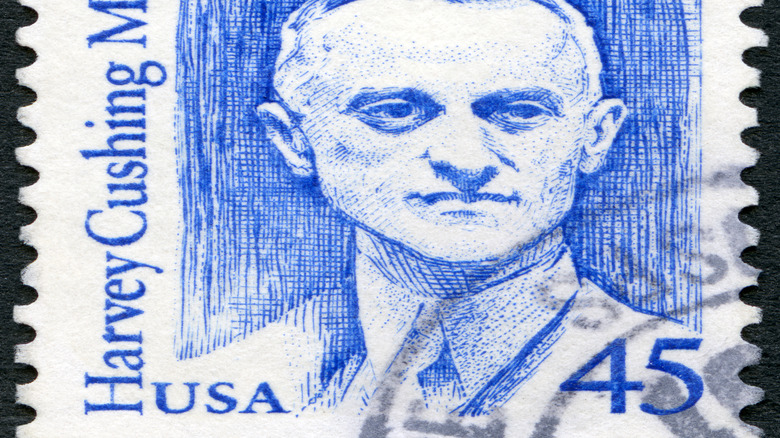A Free Museum At Yale Will Spark Curiosity About Your Brain
New Haven, Connecticut, is known for outstanding pizza, one of the world's first hamburgers, and Yale University. Yale's TikTok-approved library and the university's art museums are free to visit, as is an offbeat neuroscience museum, The Cushing Center. A unique record of early neurosurgery, The Cushing Brain Tumor Registry was a one-of-a-kind learning center for decades for medical professionals who wanted to study diseases of the brain and how to treat them. It was all but forgotten in the sub-basement of a residence hall, and the brain specimens and accompanying scientific research were almost discarded. But then, the collection was restored, organized, and moved to a custom-built space.
Now, visitors can see hundreds of brains in one-gallon jars at The Cushing Center, located in the basement of the Harvey Cushing/John Hay Whitney Medical Library at the Yale University School of Medicine. The Cushing Center educates visitors about the human brain and the beginnings of neurosurgery, telling the story through 2,200 case studies and more than 15,000 images dating from the late 1800s to 1936. It is open to the public by guided tour only on Fridays at 10 a.m. and 2 p.m. No advance registration is needed. If you're visiting in autumn, you're in luck as New Haven is one of the most charming destinations for fall foliage. No matter what time of year you're in New Haven, you can stay in one of North America's most eco-friendly hotels during your trip.
About Harvey Cushing and the brain collection
If you had to have brain surgery in the early 1900s, you'd have wanted Dr. Harvey Cushing holding the scalpel. Born in 1869 and educated at Yale, Harvard, and Johns Hopkins, Cushing was a fourth-generation physician. Fascinated with the brain, he became a neurosurgery pioneer with an impressive success record, especially considering he didn't have much of a road map. An early adopter of monitoring blood pressure, providing anesthesia, and using stems and tourniquets to curtail bleeding, Cushing operated on several hundred patients a year. He documented cases with detailed notes, hauntingly artistic photos, and specimens. The brains at The Cushing Center are in their original, clear leaded-glass jars and backlit for dramatic effect –- some labels even have Cushing's handwritten notes. Cushing's work was so influential that he graced a postage stamp.
At The Cushing Center, visitors learn about the doctor's service in World War I, his artistic and athletic skills, and his Pulitzer Prize in biography (about a fellow medical pioneer, Sir William Osler). The doctor's lab coat is displayed, as are his patient photos and rare books. Open drawers in The Cushing Center and you never know what you might find: surgical implements, a Chinese acupuncture set, notes from patients. To add to the unusualness of this collection, one of the items behind glass is a piece of meat sporting the signature of Ivan Pavlov (of Pavlov's dogs fame). Cushing demonstrated an electrosurgical tool for Pavlov, and Pavlov signed his name with it.
Explore and dine in New Haven after your visit to The Cushing Center
Visitors looking for attractions in New Haven often start with the Yale University Art Gallery, compelled by the famous artworks of Vincent Van Gogh, Edward Hopper, the museum's sculpture garden, and its lovely rooftop terrace. It's across Chapel Street from the Yale Center for British Art, which holds the largest collection of British art outside Britain, including paintings by major artists such as J.M.W. Turner, John Constable, and Thomas Gainsborough. If you're more of a fossil fan, head to the Yale Peabody Museum, a natural history museum. You don't have to be a prospective student to tour the beautiful Yale campus and learn about its 300-year history, architecture, and famous graduates. The tour and museums are free, but you can purchase an official Yale sweatshirt at The Yale Bookstore and browse The Shops at Yale.
Eating pizza is high on the list of many New Haven visitors as the city is known for its signature pizza style. Like Neapolitan pizza with a thin, crispy crust, pizza was first made by Frank Pepe Pizzeria Napoletana in 1925 (try the white clam pie). Seafood lovers should head to Shell & Bones on the waterfront, where the fish is freshly caught and sustainable and the soups, stocks, sauces, and desserts are made daily in-house. If you can put your habit of ketchup aside (they don't allow it), go to Louis' Lunch, which served one of the world's first known hamburgers in 1900. Feeling fancy? Make a reservation at the formal French Union League Café downtown. See if there's a show playing at the Shubert Theatre or Yale Repertory Theatre, which have both had productions move on to Broadway. If you're heading into Manhattan after your New Haven visit, learn how to see the Statue of Liberty up close for free.


